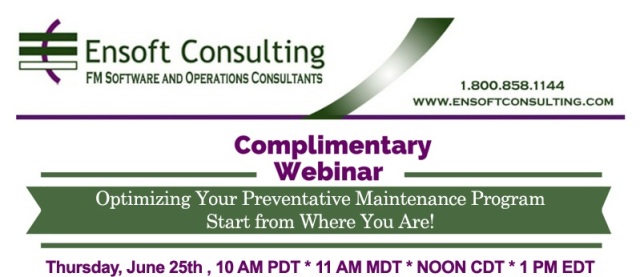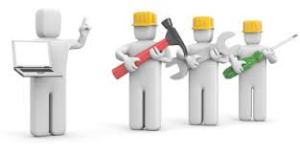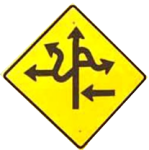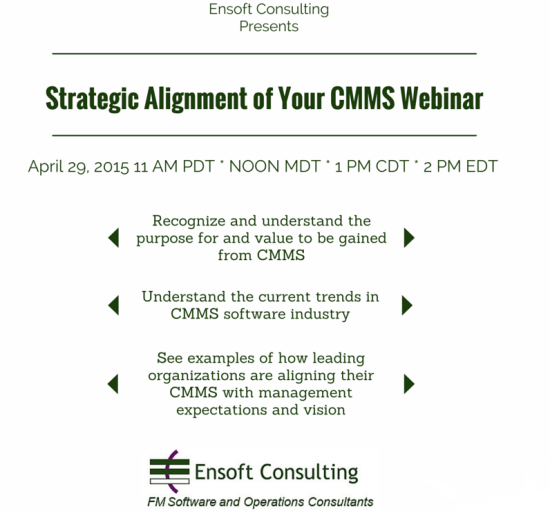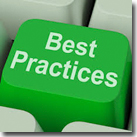 8 hours to change a light bulb! It sounds like a punch line to a joke, but for facilities managers time is money. In order to effectively manage maintenance operations, facilities managers must be able to understand – and communicate – what’s going on in their organization. Benchmarking and accurate reporting are key to managing the organization’s resources, the effectiveness of current operations, improving productivity and making effective, data-driven decisions.
8 hours to change a light bulb! It sounds like a punch line to a joke, but for facilities managers time is money. In order to effectively manage maintenance operations, facilities managers must be able to understand – and communicate – what’s going on in their organization. Benchmarking and accurate reporting are key to managing the organization’s resources, the effectiveness of current operations, improving productivity and making effective, data-driven decisions.
You can’t effectively manage what you can’t measure. Otherwise, how do you know if your facility and resources are performing well? Here are 5 things you should be keeping an eye on.
1. Labor utilization and work management. Labor is a large expense for any organization and an area in which time and again facilities managers are asked to reduce costs and/or increase productivity. It’s not enough to simply manage labor hours and work orders. True labor analysis must factor in number of productive hours, staffing ratios and various work order management indices. Tracking and analyzing work order completion and aging rates can also help to determine current trends and future scheduling needs. For example, we had one client who audited their work orders and discovered an employee was routinely logging 8 hours to change one light bulb. Was this a case of an unproductive employee? Or did further analyses bring to light special materials, equipment and other factors unique to this situation? (It didn’t.)
2. Maintenance activity. It’s hard to believe but many typical maintenance activities are unnecessary. This includes routine equipment checks and preventative maintenance on equipment that doesn’t need it. Many best practices organizations have moved beyond preventative maintenance (by which equipment is serviced on a calendar, or run-time, basis) to predictive maintenance (by which equipment conditions are monitored and maintenance is scheduled based on a prediction of when a problem is most likely to occur). Other factors that can impact maintenance activity costs, productivity and scheduling are the type of repair needed (impacting labor utilization and work management), location of repair (are repairs being clustered by area or are techs being sent across campus and back) and volume of repairs needed.
3. Inventory spending. It is not uncommon for an organization to have a workflow management system that does not include inventory control. For example, we worked with a large university client who was not using any type of inventory control. If a part was used, it was automatically re-ordered. Multiple departments across campus each housed their own inventory supply closet in addition to parts aboard various maintenance trucks and those housed within the maintenance department. When we created a centralized inventory system, they were shocked at the sheer volume of parts they had on hand, not to mention the waste of resources. Inventory control helps to keep a lid on inventory spending by creating a system to determine what’s in stock, what parts need to be regularly ordered (or automatically re-ordered) and which parts are special-use and do not require an automatic re-order.
4. Asset replacement forecasts. It’s time to put away the pen and paper and make sure your facilities management software can generate the reports you need to determine asset replacement costs. These determinations can be cumbersome – comparing multiple performance criteria, such as modality, model, location, department, risk category and more – but using evidence-based data can help you make smarter replacement decisions. These forecasts can also help identify and prioritize where repairs, renovations or replacements are required.
5. Costs of maintenance. Key factors in determining costs of maintenance include labor, materials, vendors, equipment and warranty expenses. In addition, it’s important to understand how the assets are performing relative to others. For example, we worked with a client who had a large fleet of pickup trucks, which was comprised of 5 and 10 year models, each from 2 different manufacturers. At first glance, the 10 year old trucks had slightly higher costs of maintenance in the last year than the 5 year old models. However, when they analyzed the cost of maintenance over the life of the vehicles, they were surprised to learn that the 5 year old trucks cost far more to maintain and repair than their 10 year old counterparts, not to mention the increased downtime from the greater frequency of repairs. The 5 year old trucks were lemons compared to their 10 year old counterparts.
Ensoft Consulting is a customer-focused, minority-owned consulting firm utilizing real-world experience to provide clients with software and operations solutions to move their organization forward.
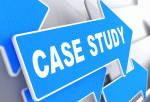 The challenge
The challenge The Result
The Result
